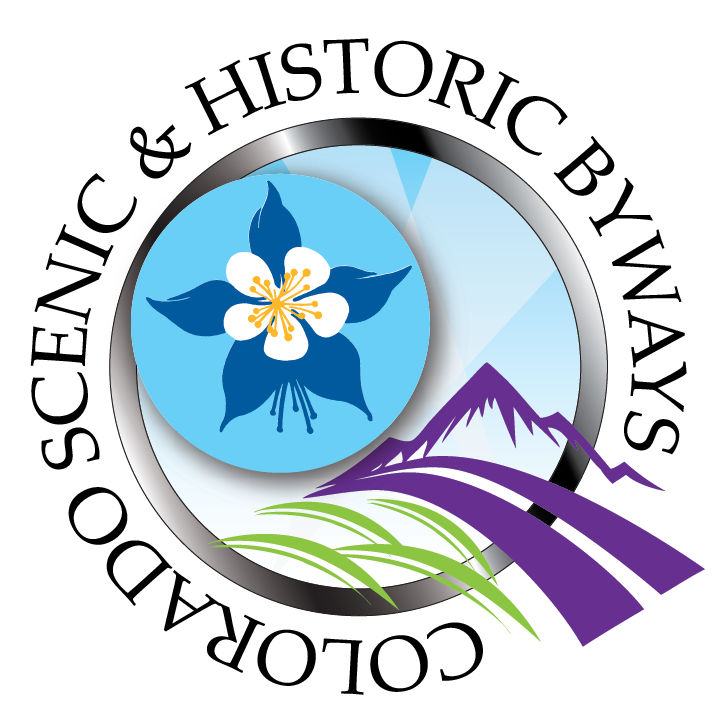
"3+1"
TAPESTRY OF PHOTOS TOP PICK: “INDIGENOUS TIES”
My name is Montoya Whiteman. I am an enrolled member of the Cheyenne and Arapaho Tribes of Oklahoma. I moved to Colorado in 2007, returning to the ancestral homelands of my people who were forced out after the tragedy of Sand Creek. I am a descendant of Vister and White Buffalo Woman, who were in Black Kettle's clan.
Today, I live in Brighton with my rescue pup, Tazi. In my free time, I volunteer at the Rocky Mountain Arsenal (RMA). I love the RMA. I volunteer because I love the wildlife. I enjoy meeting people and educating visitors and staff of Colorado and tribal histories. I am deeply connected to this land as a Cheyenne and Arapaho woman.
In 2020, I was driving the RMA and came upon a traffic jam after Mile Marker 3. The bison herd were crossing the road and causing major road block. I was among the crowd of cars and people who were observing the bison as they were going about their day. As I was driving away, I looked to my left and I saw this image. I stopped - backed-up - and voila! I caught this image of three bull bison grazing in close proximity to each other. The European Starling also happened to be riding on the back of one of the bison. Symbiosis. I've never seen anything like it! I will probably never see this again. Enjoy 3+1!
ROCKY MOUNTAIN ARSENAL, NATIONAL WILDLIFE REFUGE, COLORADO
Photo Credit: Montoya Whiteman

"Harvesting the Green"
TAPESTRY OF PHOTOS TOP PICK: “WORKIN’ IT”
KEEPING THE WET
When I see a wetland,
I see the clouds.
Lifting off the western desert,
Up and over
The crest of the continent.
When I see a wetland,
I see the snowflakes
Piling ever higher up on the Divide,
White on white,
Winter’s delight!
When I see a wetland,
I see the high country snow
Melting into rivulets,
Dancing down a steep mountainside,
Joining forces,
Making a river.
When I see a wetland,
I hear the teeming life,
The song, the chirp,
The quack, the honk
And the fluttering call
Of 20,000 Sandhill cranes,
Announcing the arrival of spring!
READ THE COMPLETE POEM - CLICK HERE
By Rio de la Vista
COLVILLE FAMILY’S CORSET RANCH ON THE RIO GRANDE IN RIO GRANDE COUNTY, COLORADO
Photo Credit: Rio de la Vista

"Stepping into the Sunrise"
TAPESTRY OF PHOTOS TOP PICK: “FELL IN LOVE - AND STAYED”
I moved to Colorado to start a new life away from repressed feelings of wrong-doings. In Nebraska, the judicial system temporarily imperiled me and awakened me to disparities of racial injustice. As I began to pick up the broken fragments of myself, I found respite in the melodic powers of nature. Having access to Colorado's outdoors afforded me opportunities to become intimate with my emotions, to calm the rage inside me, to seek out self-compassion and embellish moments of joy and comfort. It opened doors unimaginable and lifted me out of that dark place of heartache, shame and guilt. I began to appreciate my successes and my failures as moments to cherish. I stepped into each day knowing that life is impermanent and ever changing, and like the wind, I decided to flow in harmony with it.
This connection to nature led me to help propose policy recommendations for a coalition of more than 60 local, state, and national organizations to find solutions to the racial, economic, and demographic disparities in access to natural areas in Colorado. The Outdoor Equity Grant Program provides meaningful, proportional, and sustainable funding to entities providing conservation, environmental, and outdoor experiences and educational opportunities for underserved youths and families.
The tenuous link between equity and government has stifled upward mobility for persons we routinely exclude or discriminate against. The Outdoor Equity Grant Program has taken a needed step in reimagining a system that better meets the needs of our present and future generations.
LONG LAKE, ROCKY MOUNTAIN NATIONAL PARK, COLORADO
Photo Credit: Jason Swann

"You Can See Forever"
TAPESTRY OF PHOTOS TOP PICK: “BORN AND RAISED”
When people think of our incredible state, they automatically think of mountains, but, in fact, about half of our state is as flat as a pancake (or so it seems)—though much of it is in view of those majestic peaks that Colorado is so well-known for. The pancake part of Colorado is often overlooked. Still, it possesses the capacity to awe and inspire just as the mountains do. Colorado is so much more than "just" mountains, and though they are definitely my favorite part, I don't get to spend as much time there as I would like. But rather, I get to gaze at them from afar, and they never fail to take my breath away every time I catch a glimpse.
One of my favorite things about Colorado is that—especially along the Front Range, where I was born and raised—you can see practically forever. Wide-open, treeless plains, speckled with cottonwood-tree lined creeks and stands of ponderosa pines, stretch as far as the eye can see, right up to the fringes of the foothills and Rockies. In some places, you can see 100 miles—which feels like forever! I even find that I get somewhat claustrophobic when visiting other places where I can't see a long distance!
Though this photo isn't specifically from where I was born and raised, it demonstrates the idea that you really *can* see forever in Colorado! I captured this stunning sunset while leaving a hiking trip at Pawnee Buttes. In the far-off distance, the Front Range, including Longs Peak and Mt. Meeker, loom—over 90 miles away! As I caught a glimpse of these majestic peaks after exploring the equally majestic Pawnee Buttes, I was again reminded of the juxtaposed nature of Colorado's land. Both mountainous and "flat" inspire, and both are beautiful. Colorado is remarkable in this way. Everywhere you look—whether in the mountains or on the prairies—inspiration and beauty are easily found.
NEAR PAWNEE BUTTES, PAWNEE NATIONAL GRASSLANDS, COLORADO
Photo Credit: Sarah Malerich

"The Grand River"
TAPESTRY OF PHOTOS TOP PICK: “BORN AND RAISED”
The Colorado River is one of my favorite places. The river is always there. It calms me with its silent beauty and scares me with its roaring strength. The river has created the valleys and crevices of the land. It nourishes the land as it erodes it away.
The river is always there. When I need solace it is there, when I need excitement it is there, when I need affirmation that it will be alright, it is there.
COLORADO RIVER BETWEEN SILT AND RIFLE, COLORADO
Photo Credit: Lynn Shore

"Spring Wind, Mt. Antero"
TAPESTRY OF PHOTOS TOP PICK: “FELL IN LOVE - AND STAYED”
When I was a young boy growing up in Kansas, I dreamed of living in, as my hermit uncle called it, the High Country. Uncle Arnie lived, with scurrying Chipmunks, in a sod roofed, 1880s cabin near Tincup and his stories of life in Taylor Park in the 1940s and 50s were the source of those dreams. He never owned the cabin, he simply appropriated it and made it habitable for his summers in the High Country. He scratched out a little gold from time to time, did odd jobs when he could, but mostly lived a subsistence lifestyle until the fruit was ripe on the western slope and he could earn some money picking apples and peaches. Then he would return to Kansas to spend the winter with my grandparents, doing it all over again when Spring arrived and he could get back to the cabin.
I first came to Colorado around 1957. While still on the eastern plains, my grandfather, Arnie’s dad, asked me if I saw those clouds that were just coming into view on the horizon. My six-year-old, flatlands-of-Kansas eyes told me that they kind of looked like clouds, but there was something different about them. Then, with a chuckle, he told me, “Those are mountains!” By the time I was old enough to drive myself in the late 1960s, I spent all the time I could in the High Country, often at Arnie’s cabin. He taught me many things, not the least of which was how to catch Browns and Brookies. Better yet, how to fry them with cornmeal, sizzling in bacon grease in a cast iron skillet over an open fire.
Finally, more than thirty years ago, and long after Uncle Arnie’s spirit took flight to soar amongst the peaks, I got the opportunity to move to the High Country. Today I live in the shadow of Mt. Antero and time and again, I watch it change, minute by minute, hour by hour, day by day, season to season.
In this image, Spring winds come with a vengeance to the High Country in a timeless battle with the warming rays of the sun. The winds will have their way for another few weeks before the sun prevails and the spindrift no longer dances on the jagged, rocky ridges. Flake by flake the snow will begin to melt and drop by drop, trickle through the cracks and crevices as icy cold, crystal clear water rushing down the slopes on its way to the sea.
CHAFFEE COUNTY, COLORADO
Photo Credit: Dan Downing

"Barley Walk"
TAPESTRY OF PHOTOS TOP PICK: “WORKIN’ IT”
We have been growing grain on this land for five generations, nearly 100 years.
We hope to be growing here for another 100 more, if we can save this land, save this farm. If we're lucky, maybe we even save a few of the neighboring farms around it.
Development in the Front Range has put the pressure on farmers: land is expensive, water is scarce, our irrigation streams are re-routed to the growing suburbs. We could sell the land. Move where it's quieter and cheaper, where we're not struggling to maintain our fields in the midst of growing neighborhoods.
But someone has to grow food for the community. We know how to do it. We know every inch of this land, its quirks, its patterns, its capability. We know how to plant corn, grow barley and raise cattle.
So we're choosing to stay. Choosing to fight to protect the farmland around us. Choosing to keep agriculture in the midst of development.
And on days when it's rough, we take the crew on a walk through a thriving field of barley, just to remember what we're capable of. What this land is capable of. Why we're here...and why we stay.
OLANDER FARMS, FRONT RANGE, COLORADO
Photo Credit: Emily Sierra Photography for Olander Farms

















